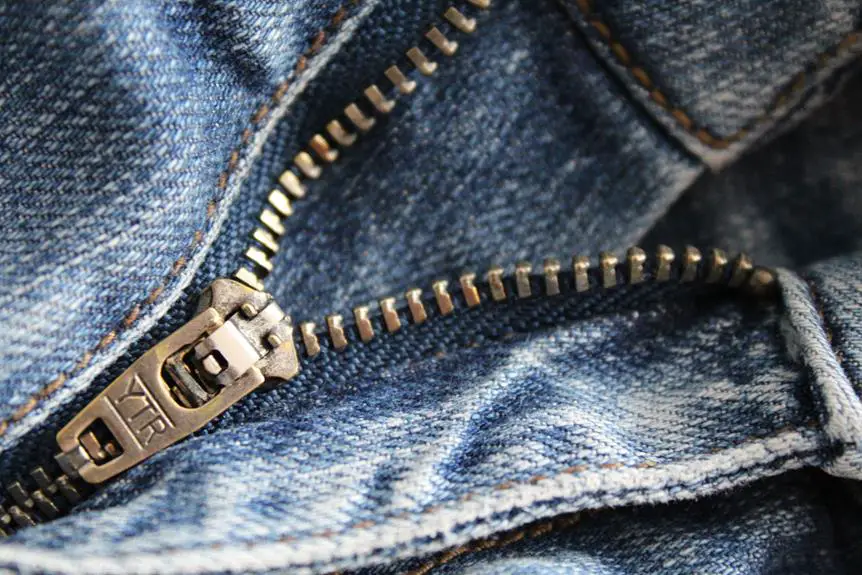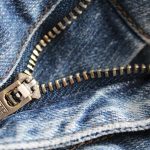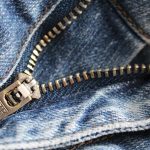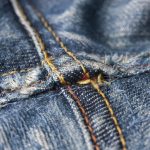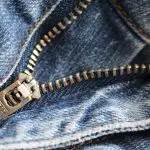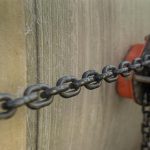You've probably heard the phrase 'different strokes for different folks,' and the same holds true for sewing seams on different fabrics. Understanding which sewing seams work best for various fabrics is like having the right key for each lock.
With the right knowledge, you can master the art of choosing the perfect sewing seam for every project. From straight stitch seams to flat-felled seams, each type serves a specific purpose and works best with particular fabrics.
Let's explore the world of sewing seams and discover the best techniques for different fabrics, so you can confidently create beautiful, durable, and professional-looking garments.
Key Takeaways
- Straight stitch seam is best for lightweight fabrics like silk or chiffon, while zigzag seam is suitable for knitwear and woven fabrics.
- French seam and bound seam are ideal for sewing lightweight fabrics like chiffon or silk, providing a clean and durable finish and preventing fraying.
- Flat-felled seam and lapped seam are used for medium to heavyweight fabrics like denim or canvas, providing a strong and professional finish.
- Overlock seam is perfect for working with stretch fabrics, ensuring flexibility, durability, and a professional finish on stretchy garments.
Straight Stitch Seam
The straight stitch seam is a versatile and commonly used sewing technique, suitable for a variety of fabrics. Its primary advantage lies in its simplicity and strength. When used on lightweight fabrics, the straight stitch seam creates a neat, unobtrusive finish. It's ideal for delicate materials like silk or chiffon, as it minimizes the risk of puckering or distorting the fabric.
However, the straight stitch seam isn't without its disadvantages. When used on stretchy or heavyweight fabrics, this seam can be prone to breaking under stress. Additionally, it may not provide the necessary stretch for garments that require flexibility. It's important to remember that the straight stitch seam should be used when sewing woven fabrics together, as opposed to knits or stretch fabrics.
This type of seam is perfect for constructing tailored garments, simple dresses, or home decor items like curtains or pillow covers. When precision and strength are key, the straight stitch seam is an excellent choice.
Zigzag Seam
Let's talk about the zigzag seam – a versatile and essential stitch for different fabric types.
This type of seam offers strength and stretch, making it perfect for a variety of projects, from knitwear to woven fabrics.
Additionally, the zigzag seam helps prevent fraying edges, ensuring your creations stay intact and durable over time.
Versatility in Fabric Choice
When choosing the zigzag seam for versatility in fabric choice, consider the fabric's stretch and texture. Fabrics with stretch like knits and jerseys are well-suited for zigzag seams due to their ability to accommodate movement without breaking the stitches. Additionally, fabrics with varied textures, such as corduroy or terry cloth, can benefit from the zigzag seam as it prevents puckering and maintains the integrity of the fabric. Take a look at the table below for a quick reference on fabric compatibility and stitching techniques for the zigzag seam:
| Fabric Type | Compatibility | Stitching Technique |
|---|---|---|
| Knits | Excellent | Zigzag stitch |
| Jerseys | Excellent | Zigzag stitch |
| Corduroy | Good | Zigzag stitch |
| Terry Cloth | Good | Zigzag stitch |
The zigzag seam offers adaptability across various fabric types, making it a valuable choice for versatile sewing projects.
Strength and Stretch
Considering the stretch and strength of different fabrics, using a zigzag stitch allows for accommodating movement without compromising the integrity of the seam. This type of stitch is particularly useful when working with stretchy or elastic fabrics, as it provides durability and prevents the seam from snapping when the fabric is stretched.
The zigzag seam distributes the stress of movement across the entire seam, enhancing its strength and preventing it from tearing. When choosing a fabric for a project that requires stretch and movement, such as activewear or dance costumes, it's important to consider the fabric's elasticity and select a zigzag seam to ensure the garment can withstand the demands placed on it.
Preventing Fraying Edges
To prevent fraying edges, reinforce the fabric with a zigzag seam. This technique helps in preventing unraveling and is especially useful when working with delicate fabrics.
When choosing the right seam for delicate fabrics, consider using the zigzag seam to prevent fraying edges. Here are some benefits of using a zigzag seam for preventing fraying edges:
- Provides a clean and professional finish to the fabric edge.
- Offers flexibility, making it suitable for stretchy fabrics.
- Helps to prevent fraying, which is crucial for maintaining the integrity of delicate fabrics.
- Can be used as a decorative finish, adding a unique touch to the garment.
French Seam
For sewing lightweight fabrics like chiffon or silk, you should use a French seam to ensure a clean and durable finish. French seams are perfect for delicate fabrics as they encase the raw edges, preventing fraying and providing a professional finish. This technique is commonly used in fine tailoring and couture sewing due to its clean and elegant look. It's a bit more time-consuming than other seam finishes, but the result is well worth the effort.
Here's a table to summarize the benefits of using French seams for delicate fabrics:
| French Seam Benefits | Description |
|---|---|
| Prevents Fraying | Encases raw edges, preventing fraying and ensuring durability. |
| Professional Finish | Provides a neat and elegant finish, ideal for delicate fabrics. |
| Suitable for Couture Sewing | Commonly used in high-end tailoring and couture sewing for a polished look. |
French seams are a mark of quality craftsmanship, and mastering this technique will elevate your sewing projects, especially when working with delicate fabrics.
Flat-Felled Seam
When sewing medium to heavy weight fabrics like denim or canvas, you should opt for a flat-felled seam for its strong and durable construction. This seam type is commonly used in sturdy garments like jeans and workwear. It not only provides strength but also a neat, finished look.
To master the flat-felled seam, consider these key points:
- Seam Finishes, Decorative Options: Flat-felled seams are known for their clean and professional finish on both the inside and outside of the garment. You can also experiment with decorative topstitching to add a stylish touch.
- Seam Allowances, Adjusting Width: Understanding how to properly trim and press seam allowances is crucial for a perfect flat-felled seam. Additionally, adjusting the width of the seam allowances allows you to accommodate different fabric thicknesses.
- Strong and Durable Construction: Flat-felled seams are incredibly strong, making them perfect for heavy-duty fabrics. By mastering this seam, you'll ensure that your seams can withstand the test of time and wear.
With these tips, you'll be able to confidently create flat-felled seams that not only provide durability but also add a professional touch to your sewing projects.
Overlock Seam
Hey there!
When it comes to working with stretch fabrics, the overlock seam is your go-to. It's great for preventing fraying and securing those elastic materials.
Plus, it's versatile enough to use on most fabrics, making it a handy technique to have in your sewing arsenal.
Overlock for Stretch Fabrics
You can achieve a professional finish on stretch fabrics by using the overlock seam. This technique is essential for preventing fraying and ensuring durability in garments made from stretchy materials.
Here are some key points to consider when using the overlock seam for stretch fabrics:
- Overlock Stitch: Utilize a three or four-thread overlock stitch to create a flexible and strong seam that can withstand the stretching and movement of the fabric.
- Seam Allowance: Maintain a consistent seam allowance to prevent excessive bulk while ensuring the seam's strength and stability.
- Finishing Edges: The overlock seam not only joins fabric pieces but also neatly finishes the raw edges, providing a clean and professional look to your stretch fabric projects.
- Stretch Fabric Techniques: Mastering the overlock seam is crucial for handling various stretch fabrics, including jersey, spandex, and knits, allowing you to create high-quality, comfortable garments.
Understanding and applying these techniques will elevate your sewing skills and empower you to work confidently with stretch fabrics.
Versatile for Most Fabrics
The overlock seam is a versatile choice for most fabrics due to its ability to provide both strength and a clean finish. This seam finish is ideal for preventing fraying and ensuring durability across a wide range of fabric types. Whether you're working with cotton, linen, wool, or synthetic materials like polyester and nylon, the overlock seam delivers reliable results.
Its flexibility makes it suitable for various garment types, from lightweight dresses to heavy-duty outerwear. Additionally, the overlock seam is compatible with stretch fabrics, making it a go-to option for projects that involve both stretch and non-stretch materials. Its ability to adapt to different fabric compositions and weights showcases its versatility and makes it an essential skill for any sewing enthusiast looking to master seam finishes.
Bound Seam
When sewing with delicate fabrics, such as silk or chiffon, a bound seam is an excellent choice for providing a clean and professional finish. This seam finish encases the raw edges of the fabric within a strip of fabric, known as seam binding, to prevent fraying and add a decorative touch. Here's why you should consider using a bound seam:
- Suitable for Delicate Fabrics: Bound seams are ideal for delicate fabrics as they prevent fraying and keep the fabric edges neat and tidy.
- Decorative Finishes: Seam binding offers an opportunity for decorative finishes, allowing you to add a pop of color or contrast to your garment.
- Sturdy Seam Allowance: This seam finish reinforces the seam allowance, making it suitable for fabrics that are prone to fraying or unraveling.
- Professional Look: Bound seams provide a clean, professional look to your garment, making it a great choice for dressmaking and formal wear.
Incorporating bound seams into your sewing projects can elevate the overall quality and aesthetics of your creations, especially when working with delicate or high-end fabrics.
Lapped Seam
What makes a lapped seam a practical choice for joining medium to heavyweight fabrics? Lapped seams are a sturdy and versatile option for medium to heavyweight fabrics due to their strong seam construction and neat appearance. When sewing with these fabrics, lapped seams provide the necessary durability and a clean finish.
| Advantages | Disadvantages |
|---|---|
| Strong seam construction | Requires more fabric due to overlapping |
| Neat appearance with minimal fraying | Seam allowance bulk at the overlap area |
| Allows for various seam finishing | May be challenging to achieve a perfectly |
| even overlap |
Lapped seams are commonly used in denim, canvas, and upholstery fabrics due to their ability to withstand heavy-duty wear and tear. When sewing with lapped seams, it's important to consider the extra fabric required for overlapping and the potential bulk in the seam allowance area. However, the durability and professional finish make lapped seams an excellent choice for medium to heavyweight fabrics.
Frequently Asked Questions
Can I Use a Straight Stitch Seam on Stretchy Fabrics Like Jersey or Spandex?
Yes, you can use a straight stitch seam on stretchy fabrics like jersey or spandex. However, it's important to consider alternative seams like zigzag or overlock for better fabric suitability and durability.
What Type of Fabric Is Best Suited for a Flat-Felled Seam?
For a flat-felled seam, denim is ideal due to its durability and strength. It holds up well to the rigors of this seam. Cotton works great too, offering breathability and comfort for a classic finish.
Are There Any Special Considerations When Using a Zigzag Seam on Sheer or Delicate Fabrics?
When sewing with sheer or delicate fabrics, using a zigzag stitch can prevent fraying and maintain flexibility. Adjust your sewing machine settings to a narrow width and short length for best results. This technique ensures a professional finish.
Can I Use an Overlock Seam on Heavy Fabrics Like Denim or Canvas?
Yes, an overlock seam is great for heavy fabrics like denim or canvas. It provides a strong, neat finish that prevents fraying. However, keep in mind that it may not be suitable for stretchy fabrics like jersey or spandex.
What Type of Fabric Is Most Suitable for a Bound Seam?
For silk satin or chiffon, a bound seam offers a neat finish and prevents fraying, ensuring a delicate touch. But for linen or cotton, a bound seam can add structure and durability, ideal for these sturdy fabrics.
- How Does Ring Spun Cotton Affect Garment Fit and Shape Retention? - August 13, 2024
- What Are the Challenges in Producing Ring Spun Cotton? - August 13, 2024
- Is Ring Spun Cotton Suitable for Plus-Size Clothing? - August 13, 2024

